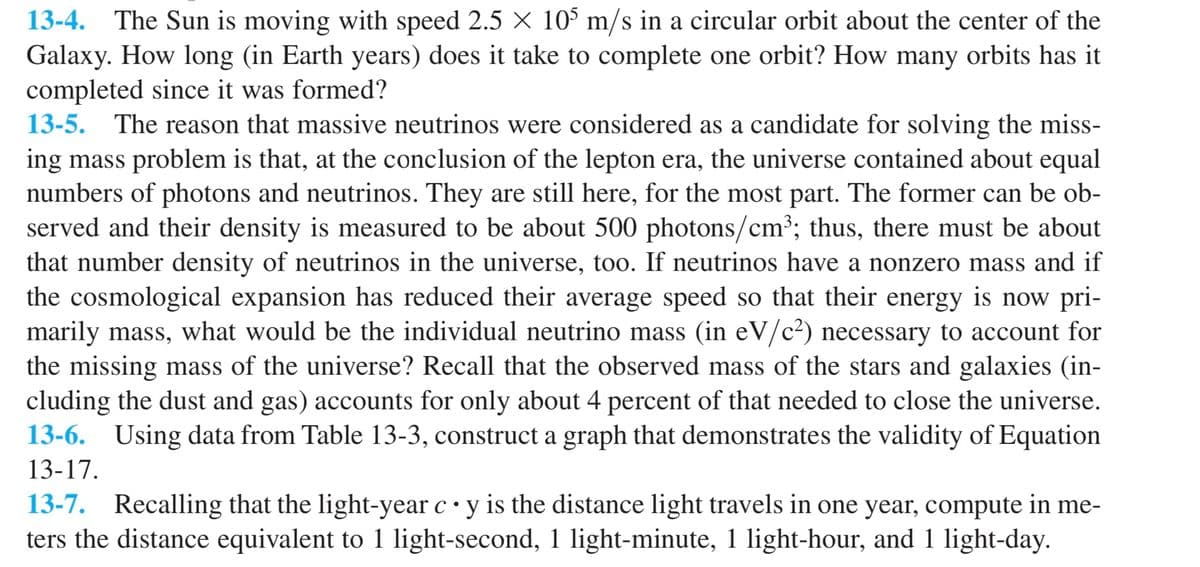13-5. The reason that massive neutrinos were considered as a candidate for solving the miss- ing mass problem is that, at the conclusion of the lepton era, the universe contained about equal numbers of photons and neutrinos. They are still here, for the most part. The former can be ob- served and their density is measured to be about 500 photons/cm³; thus, there must be about that number density of neutrinos in the universe, too. If neutrinos have a nonzero mass and if the cosmological expansion has reduced their average speed so that their energy is now pri- marily mass, what would be the individual neutrino mass (in eV/c²) necessary to account for the missing mass of the universe? Recall that the observed mass of the stars and galaxies (in- cluding the dust and gas) accounts for only about 4 percent of that needed to close the universe.
Stellar evolution
We may see thousands of stars in the dark sky. Our universe consists of billions of stars. Stars may appear tiny to us but they are huge balls of gasses. Sun is a star of average size. Some stars are even a thousand times larger than the sun. The stars do not exist forever they have a certain lifetime. The life span of the sun is about 10 billion years. The star undergoes various changes during its lifetime, this process is called stellar evolution. The structure of the sun-like star is shown below.
Red Shift
It is an astronomical phenomenon. In this phenomenon, increase in wavelength with corresponding decrease in photon energy and frequency of radiation of light. It is the displacement of spectrum of any kind of astronomical object to the longer wavelengths (red) side.
ANSWER NUMBER 5 ONLY. THANK YOU!

Step by step
Solved in 2 steps









